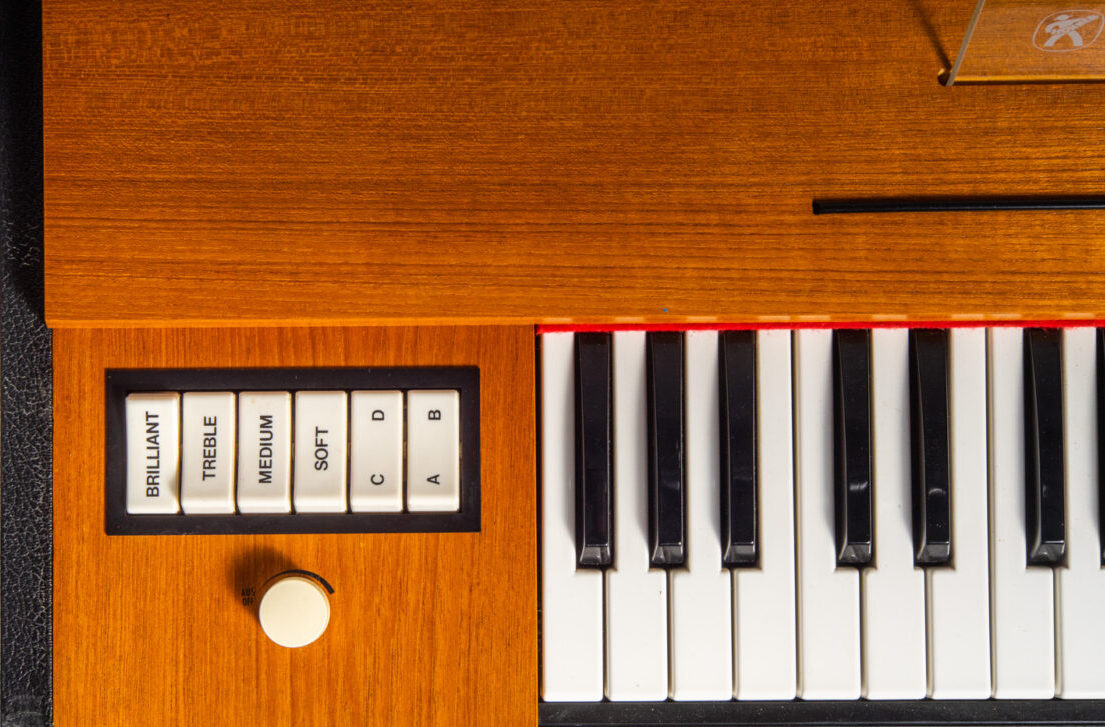Keyboard – Electric Piano
First released: 1964
Produced in: Trossingen, Germany (fmr. West Germany)
When inventor Ernst Zacharias joined the German musical instrument company Hohner in 1954, it was in a state of flux, still reeling from the seizure of its factory by the Nazis to manufacture detonators during World War II. Always more of a tinkerer than a musician, a young Zacharias spent what was supposed to be his organ practice time working on his own mechanical projects. In 1964, he invented for Hohner an instrument whose sound would become a key player in the rock, funk and reggae music of the 1960s and beyond — the Clavinet.
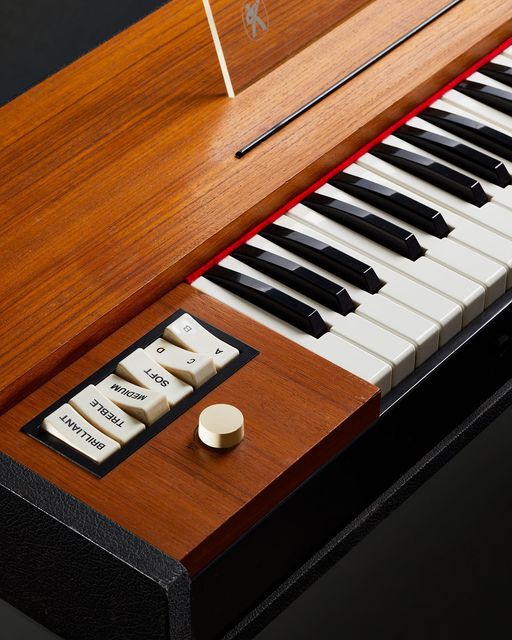
On the family tree of instruments, the Clavinet’s roots trace back to the clavichord, a keyboard invented in the late Middle Ages specifically to be used for rehearsals or in small groups, as it simply lacked the volume for larger spaces. Zacharias’ Clavinet is an electrified version, its sound — produced by rubber pads hitting steel strings in a hammer-like fashion similar to that of the modern piano — amplified by pickups, in a manner like those of an electric guitar.
With its bold timbre, Zacharias’ Clavinet emerged as a new color for keyboardists to add to their palette. Perhaps most famously, Stevie Wonder built the foundation of his 1972 classic “Superstition” on the Clavinet’s distinctive funky sound. In fact, he liked it so much that he overdubbed an additional track of the instrument, baffling keyboardists trying to play the song with just two hands.
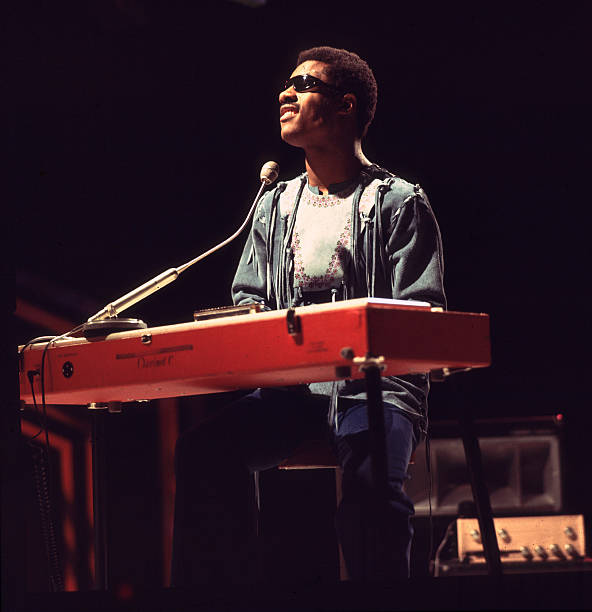
The following year, Eddie Kendricks, formerly of the Temptations, scored his first major hit as a solo artist with the chart-topping “Keep on Truckin’.” Leonard Canton Jr.’s hypnotic Clavinet bass line propels the song at the 0:11 mark; at 1:14, we encounter some of the instrument’s signature percussive stabs, which effectively elbow out drummer Ed Greene, who almost certainly would have played a fill here.
Despite its distinctive sound, the Clavinet layers well with other instruments, most notably the electric guitar, and would not be restricted to funk music alone. In 1973, the rock band Grand Funk Railroad recorded its soon-to-be number-one hit “We’re an American Band” — take note of Craig Frost’s Clavinet, the song’s engine, paying particular attention to how well it blends with Mark Farmer’s overdriven guitar. Isolating the first guitar and middle keyboard stems at the 0:08 mark reveals how well they mesh: the Clavinet’s grittiness acts almost as a second rhythm guitar. But its unique tone still resonates, notably at the 0:23 mark, when the two instruments (Farmer’s percussive muted strums aside) lock in together for the same verse riff.
The Clavinet also mixes well with other keyboards. Ohio Players’ 1975 pop and soul hit “Love Rollercoaster” is a great example. Isolating the first keyboard stem at the 0:52 mark reveals how the Clavinet subtly creates new momentum as the verse begins: its brashness adds a rhythmic lift to the section that gets lost in the full mix, while still blending easily with the smoother quality of the Fender Rhodes.
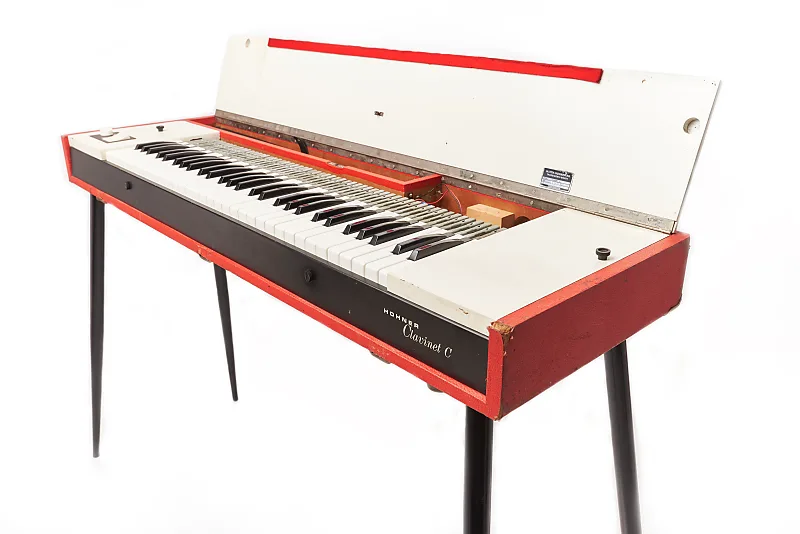
The Clavinet was used in a similar way in yet another number one hit, Edwin Starr’s 1970 single “War.” Isolating the Clavinet and horn stems at 0:06 reveals just how well they pair, despite the stridency of the horns. It’s easy to miss the Clavinet even here, but muting its stem shows just how much it’s contributing.
The Clavinet’s electric guitar-like attack soon had keyboardists reaching for their guitarists’ effects pedals, most notably the wah-wah. Rufus’ 1974 single “Tell Me Something Good” reached number three on Billboard’s Hot 100 and R&B charts, powered by Kevin Murphy’s Clavinet (left channel). The opening and closing of the wah’s filter punctuates each of its chordal stabs — an irresistible quasi-vocal effect.
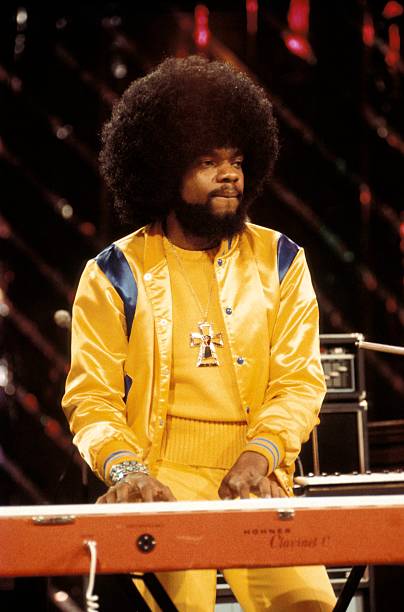
Hohner ceased production in 1982, but the Clavinet continued to be a part of the sonic landscape on some of that decade’s biggest hits, including Prince’s “1999” and Toto’s “Africa,” all the way up to songs like Five for Fighting’s 2003 hit “100 Years.” Today, the Clavinet survives with the help of a vibrant market for replacement parts, and while it’s mostly used more subtly in modern contexts, keyboardists and producers alike continue to yearn for its singular sound.
Below are a selection of songs in KORD that feature the Clavinet:
- American Pie
- Keep On Truckin'
- Love Rollercoaster
- Tell Me Something Good
- War
- We're an American Band
- Don't Leave Me This Way

